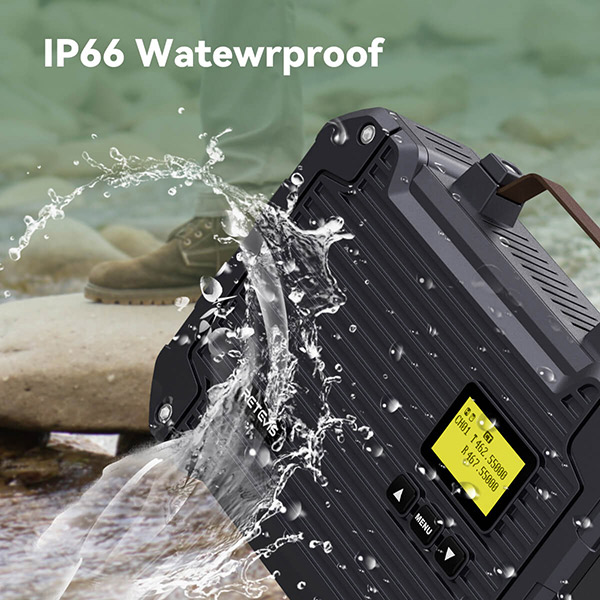How GMRS Repeater Kits Can Revolutionize Communication in Remote Locations

How GMRS Repeater Kits Can Revolutionize Communication in Remote Locations
The Communication Challenge in Remote Areas
For those living, working, or adventuring in remote locations, reliable communication isn't just convenient—it's often a matter of safety. Whether you're managing a wilderness retreat, operating an off-grid homestead, or exploring backcountry trails, traditional communication methods frequently fail when you need them most. Cell towers are sparse, satellite phones are expensive, and basic two-way radios lack sufficient range in mountainous or heavily forested terrain.
This is where GMRS repeater kits step in to transform your communication capabilities. These powerful systems bridge the gaps where other technologies fall short, providing dependable connectivity exactly where you need it most.
What Makes GMRS Repeater Kits So Effective?
Extended Range Capabilities
-
Ranch hands can communicate across vast properties
-
Hunting parties stay connected in dense wilderness
-
Off-grid communities maintain reliable contact
-
Search and rescue teams coordinate more effectively
All-Weather Reliability with IP66 Protection
Remote locations often mean exposure to harsh elements. The best GMRS repeater kits feature IP66 waterproof ratings, ensuring they continue functioning through:
-
Heavy rain and snow
-
Dust storms
-
High humidity
-
Extreme temperature fluctuations

- RT97L GMRS Repeater Kits
This rugged construction means your communication system won't fail when weather turns bad—precisely when you might need it most.
Key Components of an Effective GMRS Repeater Kit
A complete GMRS repeater solution typically includes:
-
High-Power Repeater Unit (25W)
-
The core component that receives and retransmits signals
-
25W output provides maximum coverage area
-
Dual-band capability for flexible operation
-
-
Durable Antenna System
-
High-gain antenna for optimal signal propagation
-
Weather-resistant mounting hardware
-
Adjustable for various installation scenarios
-
-
Power Supply Options
-
12V DC for vehicle or solar power integration
-
AC adapter for fixed locations
-
Battery backup capability
-
-
Mounting Hardware
-
Versatile brackets for towers, buildings, or vehicles
-
Lightning protection for safety
-
Cable management solutions
-
Real-World Applications That Benefit Most
Off-Grid Living and Homesteading
For those living beyond the reach of traditional utilities, GMRS repeater kits create a private communication network that doesn't depend on outside infrastructure. Families can:
-
Coordinate daily activities across large properties
-
Maintain contact during emergencies
-
Connect multiple buildings or work sites
Wilderness Tourism and Retreats
Lodge owners and outdoor guides use these systems to:
-
Keep staff connected across expansive properties
-
Enhance guest safety during activities
-
Maintain communication with remote cabins or outposts
Agricultural Operations
Large farms and ranches implement GMRS repeater networks to:
-
Coordinate equipment movements
-
Monitor livestock in distant pastures
-
Respond quickly to emergencies in remote fields
Installation Best Practices
To maximize your GMRS repeater's effectiveness:
-
Elevate Your Antenna
-
Higher placement significantly improves range
-
Consider trees, towers, or rooftop mounts
-
-
Optimize Power Supply
-
Solar-charged battery systems work well for permanent installations
-
Vehicle power suits mobile applications
-
-
Test and Adjust
-
Conduct range tests from various locations
-
Fine-tune antenna positioning for best coverage
-
Establish clear channel protocols for users
-
Getting Started With Your GMRS Repeater System
Ready to transform communication in your remote location? Follow these steps:
-
Assess Your Needs
-
Determine coverage area required
-
Count expected users
-
Identify key communication points
-
-
Select Appropriate Equipment
-
Choose a kit matching your power and durability needs
-
Ensure compatibility with existing radios
-
-
Plan Your Installation
-
Scout optimal antenna locations
-
Arrange power supply solutions
-
Prepare mounting hardware
-
-
Test and Train
-
Verify system performance
-
Educate all users on proper operation
-
Establish communication protocols
-
By implementing a GMRS repeater kit, you're not just adding another piece of equipment—you're creating a lifeline that keeps people connected when distance and terrain would otherwise isolate them. In remote locations where communication can mean the difference between inconvenience and emergency, that's not just an improvement—it's a revolution.






